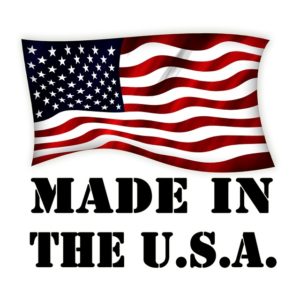It’s the quiet comeback story of the past year: U.S. based manufacturing has been on the rise and the trend appears to be continuing, according to recent reports by the Institute for Supply Management’s index. According to the ISM report, the year 2013 ended with the largest increase in durable goods new orders in more than two and a half years. As such, many manufacturing outfits large and small have “reshored” or relocated their manufacturing facilities to the United States.
Causes of this comeback story remain numerous. Some attribute it to a resurgence of pride in “Made-in-USA” products and tags. North American consumers are starting to see the high cost of overseas manufacturing in terms of poor working conditions for laborers, environmental harm and loss of local jobs. Purchasing a product produced here at home rather than in overseas’ sweatshops provides consumers with a feel-good feeling.
Financing Manufacturing Jobs Locally
Yet more than local pride, it has become more costly to produce goods in China in recent years due to increased wages of workers and improved work conditions. When you take into consideration shipping times and costs, producing goods in China is now only marginally less expensive than producing them locally. To stay competitive, workers at many U.S.-based factories are no longer taking home the unionized paychecks and pension plans of their parents’ generation.
Machine Shop Factoring Helps Factories Come Home
Companies looking to reshore their international manufacturing by bringing them back to the U.S. can turn to manufacturing factoring for financial help with this process. Invoice factoring companies have a long history of helping with manufacturing financing with everything from boosting production for holiday season, covering the costs of new equipment, meeting payroll demands and purchasing raw materials.
When a company decides to relocate back to the U.S., it must source and find a location to either repurpose existing facilities or build new ones from scratch. It then must hire workers, purchase or lease machinery and equipment, and procure materials. Few companies have the cash reserves to handle such a sizable transition without obtaining cash from loans or invoice factoring.


 Since 1991 I specialize in Invoice Factoring, PO financing and ABL facilities. I currently work internationally with companies in the US and Canada via our internet marketing division. Specialties: Accounts Receivable Factoring and Payroll Funding for Manufacturing, Oil & Gas, Telecommunications, Wholesale Trade Distribution, Staffing and Transportation. I always enjoy helping companies rise to the next level of success.
Since 1991 I specialize in Invoice Factoring, PO financing and ABL facilities. I currently work internationally with companies in the US and Canada via our internet marketing division. Specialties: Accounts Receivable Factoring and Payroll Funding for Manufacturing, Oil & Gas, Telecommunications, Wholesale Trade Distribution, Staffing and Transportation. I always enjoy helping companies rise to the next level of success.

